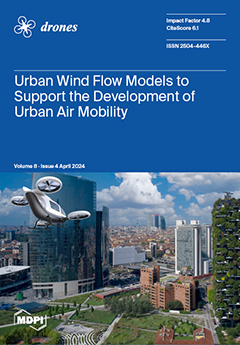Artemisia frigida, as an important indicator species of grassland degradation, holds significant guidance significance for understanding grassland degradation status and conducting grassland restoration. Therefore, conducting rapid surveys and monitoring it is crucial. In this study, to address the issue of insufficient identification
[...] Read more.
Artemisia frigida, as an important indicator species of grassland degradation, holds significant guidance significance for understanding grassland degradation status and conducting grassland restoration. Therefore, conducting rapid surveys and monitoring it is crucial. In this study, to address the issue of insufficient identification accuracy due to the large density and small size of
Artemisia frigida in UAV images, we improved the YOLOv7 object detection algorithm to enhance the performance of the YOLOv7 model in
Artemisia frigida detection. We applied the improved model to the detection of
Artemisia frigida across the entire experimental area, achieving spatial mapping of
Artemisia frigida distribution. The results indicate: In comparison across different models, the improved YOLOv7 + Biformer + wise-iou model exhibited the most notable enhancement in precision metrics compared to the original YOLOv7, showing a 6% increase. The mean average precision at intersection over union (IoU) threshold of 0.5 (
[email protected]) also increased by 3%. In terms of inference speed, it ranked second among the four models, only trailing behind YOLOv7 + biformer. The YOLOv7 + biformer + wise-iou model achieved an overall detection precision of 96% and a recall of 94% across 10 plots. The model demonstrated superior overall detection performance. The enhanced YOLOv7 exhibited superior performance in
Artemisia frigida detection, meeting the need for rapid mapping of
Artemisia frigida distribution based on UAV images. This improvement is expected to contribute to enhancing the efficiency of UAV-based surveys and monitoring of grassland degradation. These findings emphasize the effectiveness of the improved YOLOv7 + Biformer + wise-iou model in enhancing precision metrics, overall detection performance, and its applicability to efficiently map the distribution of
Artemisia frigida in UAV imagery for grassland degradation surveys and monitoring.
Full article





